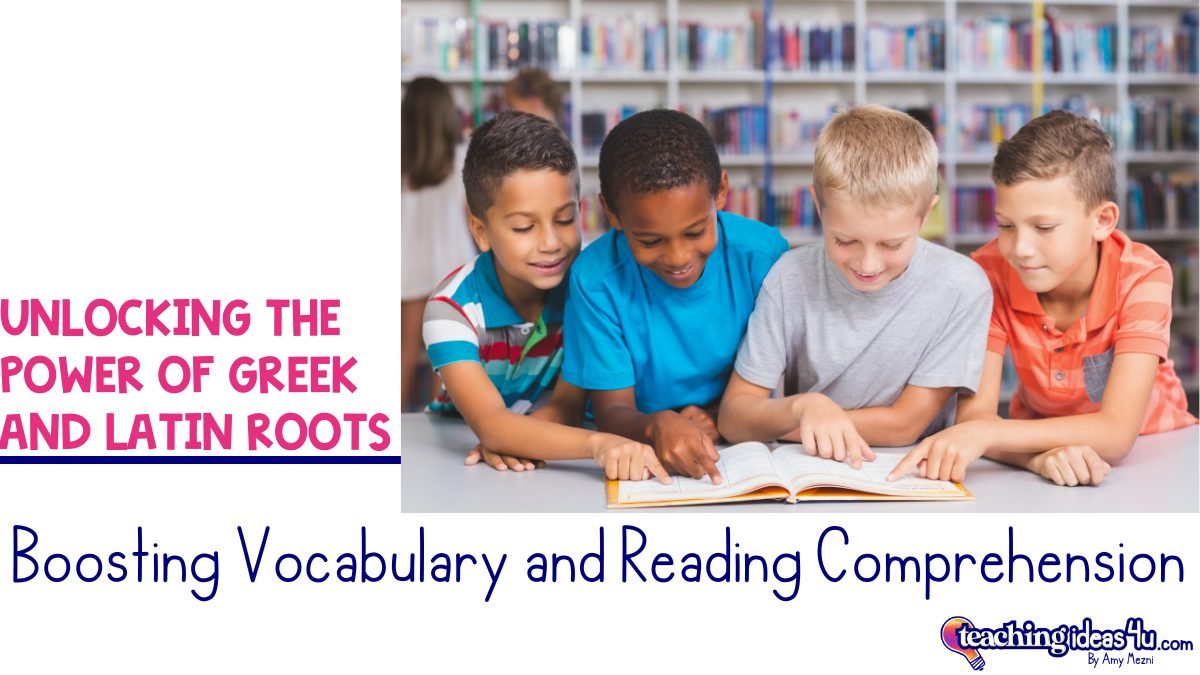Unlocking the Power of Greek and Latin Roots: Boosting Vocabulary and Reading Comprehension
Are you ready to take your students' vocabulary skills to the next level? Research has shown that one of the most effective ways to expand vocabulary is through the study of Greek and Latin roots. Morphology can provide your students with the tools they need to unlock the meanings of unfamiliar words and improve their overall reading comprehension.
The research on the science of reading has shown students need direct instruction on phonics and phonemic awareness. While phonological awareness has a strong correlation to reading ability in primary grades, morphological awareness is a better predictor in the intermediate grades. Morphological awareness is the ability to understand how words are broken into the smallest units of meaning in language,or morphemes (prefixes, roots, and suffixes.)
As students get older, they are expected to read increasingly longer passages with complex words, especially in expository texts. If students are unable to determine the meaning of unknown vocabulary words, it can affect their reading comprehension and lead to the development of misconceptions of the topics.
And this is where Greek and Latin roots come in as an essential piece of the puzzle.
Numerous studies have shown that knowledge of Greek and Latin morphology enhances vocabulary and reading comprehension skills. Researchers have found that explicit instruction in roots leads to improved word knowledge, word recognition, and comprehension abilities. Additionally, studies have demonstrated that students who receive root instruction outperform their peers on vocabulary assessments.
Enhancing Vocabulary Skills
Did you know that a significant portion of the English language is derived from Greek and Latin roots? When students have a strong understanding of morphemes, they are better able to guess the meaning of unknown words.
Knowledge of Greek and Latin roots and affixes also enables students to make connections between words, strengthening their overall word knowledge. For example, knowing that the Latin root "rupt" means "to break" allows students to quickly grasp the meaning of words like "rupture," "interrupt," or "erupt." Students may not know exactly what the new words mean, but, with knowledge of roots, they can make inferences about the unfamiliar words.
Boosting Reading Comprehension
Reading comprehension relies on the ability to comprehend and interpret words accurately within a text. Greek and Latin morphology provides a framework for understanding unfamiliar words, enabling students to comprehend texts even though they may not know all of the words..
When students encounter a word with a familiar root, they can tap into their knowledge to infer the word's meaning, leading to deeper comprehension and more engaged reading experiences.
We want students to become confident readers and effective communicators. Introducing Greek and Latin roots into your curriculum is a research-backed approach that can transform the way students engage with words, increase their vocabulary, and improve their comprehension.
To learn more about Greek and Latin morphology, join me next week when I will discuss using morphology to support ELLs and struggling Readers.
References:
Goodwin, A. P., & Ahn, S. (2010). A Meta-Analysis of Morphological Interventions in English: Effects on Literacy Outcomes for School-Age Children. Scientific Studies of Reading, 14(3), 290-314.
Nagy, W., Berninger, V. W., & Abbott, R. D. (2006). Contributions of Morphology Beyond Phonology to Literacy Outcomes of Upper Elementary and Middle School Students. Journal of Educational Psychology, 98(1), 134-147.
Nagy, W. E., & Anderson, R. C. (1984). How Many Words Are There in Printed School English? Reading Research Quarterly, 19(3), 304-330.
Smith, C. R., & Reed, D. K. (2012). Greek and Latin Roots: Keys to Building Vocabulary. ASCD.
Whissell-Turner, K. & Anila, F. (2021). Knowledge of Greek and Latin Roots is Related to Reading Comprehension Among French-speaking Sixth Graders, Canadian Journal of Applied Linguistics, 24(3), 61 - 78.

